Inbox and environment News: Issue 358
May 6 - 12, 2018: Issue 358
Avalon Boomerang Bags Update: May 2018
Tuesday 8th May 2018
Last days of stitching at Kate's creative space - SewCraftCook - thanks again for sharing it with us over the past year.
Saturday 12th May - Stall outside Woolies Avalon
Come & join us in the morning - spreading the word, promoting a plastic free environment and selling some of our beautiful "Bought to support" bags as well as other enviro friendly cups, toothbrushes, straws and cutlery sets .........to name a few.
Can you help for an hour or two- please send an email or call Robyn 0412 314 754
Tuesday 15th May 2018
We're moving - back to The Avalon Recreation Centre.
Moving from 11am from SewCraftCook, 20/14 Polo Ave, Mona Vale back to the Recreation Centre.
We have several wonderful, amazing bodies lined up to help but if you're available please send an email to us. Thanks
Tuesday 22nd May 2018
We'll be ready to start creating our bags again from 11am - guaranteed the parking will be easier and the company terrific.
Please come and join us.
We need sewers AND non-sewers , any enthusiastic body welcome. Please join us for an hour or two, even three or four. Pick up some fabric and create some bags at home, even help me create better newsletters.
Saturday 21st July
Avalon Car Boot Sale 8am-2pm Dunbar Park
It's on again- an awesome way for the community to clear those now unused items.
As well as our stall, we're having the "sausage sizzle", a great fundraiser for us......................thanks in advance to all our bar-b-quers, onion choppers and sandwich wrapperers.
Needing a few hands for this - it gives us great exposure and helps spread the message. Please reply or call Robyn for more info 0412 314 754
Last days of stitching at Kate's creative space - SewCraftCook - thanks again for sharing it with us over the past year.
Saturday 12th May - Stall outside Woolies Avalon
Come & join us in the morning - spreading the word, promoting a plastic free environment and selling some of our beautiful "Bought to support" bags as well as other enviro friendly cups, toothbrushes, straws and cutlery sets .........to name a few.
Can you help for an hour or two- please send an email or call Robyn 0412 314 754
Tuesday 15th May 2018
We're moving - back to The Avalon Recreation Centre.
Moving from 11am from SewCraftCook, 20/14 Polo Ave, Mona Vale back to the Recreation Centre.
We have several wonderful, amazing bodies lined up to help but if you're available please send an email to us. Thanks
Tuesday 22nd May 2018
We'll be ready to start creating our bags again from 11am - guaranteed the parking will be easier and the company terrific.
Please come and join us.
We need sewers AND non-sewers , any enthusiastic body welcome. Please join us for an hour or two, even three or four. Pick up some fabric and create some bags at home, even help me create better newsletters.
Saturday 21st July
Avalon Car Boot Sale 8am-2pm Dunbar Park
It's on again- an awesome way for the community to clear those now unused items.
As well as our stall, we're having the "sausage sizzle", a great fundraiser for us......................thanks in advance to all our bar-b-quers, onion choppers and sandwich wrapperers.
Needing a few hands for this - it gives us great exposure and helps spread the message. Please reply or call Robyn for more info 0412 314 754
Geological And Bioregional Assessment Of Beetaloo Sub-Basin
April 27, 2018: Joint media release - The Hon. Josh Frydenberg MP, Minister for the Environment and Energy and The Hon. Matt Canavan, Minister for Resources and Northern Australia
In the wake of the Northern Territory Government’s decision to lift its moratorium on hydraulic fracturing, the NT’s Beetaloo Sub-basin has been selected as the third and final region to be assessed by the Geological and Bioregional Assessment Program.
“The program will assess the environmental safety of extracting gas from the region as the Coalition Government seeks to ensure that Australia can access our plentiful resources in a responsible way,” Minister Frydenberg said.
The 28,000 square kilometre Beetaloo Sub-basin lies southeast of Katherine in the Northern Territory and was selected for its high prospectivity, demonstrated shale gas flows and its proximity to new pipeline infrastructure – all of which make it an excellent candidate to deliver new gas supplies to the east coast gas market.
Minister for Resources and Northern Australia Matt Canavan said initial estimates suggest the NT could be sitting on a massive gas resource of more than 200 years’ supply.
“That huge quantity of gas means jobs and investment in the North,” Minister Canavan said.
“It’s not only the jobs involved in extracting the gas. Access to this gas could also attract new industries such as manufacturing and refining and create more new jobs in Northern Australia.”
The $30.4 million Geological and Bioregional Assessments Program is part of the ‘Towards a New Energy Future’ package in the 2017-18 Budget.
The studies will be conducted by Geoscience Australia and the CSIRO, supported by the Bureau of Meteorology and managed by the Department of the Environment and Energy.
The independent scientific studies will assess the geology, water quantity and quality of surface and groundwater as well as protected environmental assets to determine the potential impacts and environmental safety of shale and tight gas developments.
This work will directly contribute to the Strategic Regional Environmental Baseline Assessment (SREBA) which was a key recommendation of the Scientific Inquiry into Hydraulic Fracturing in the Northern Territory.
Work on the Beetaloo Sub-basin assessment will begin in mid-2018. It is the third and final region to be assessed as a potential source of gas by the Coalition Government. Assessments have already commenced in the Cooper Basin in Queensland and South Australia and the Isa Superbasin in Queensland.
Nominations Open For 2018 NSW Green Globe Awards
Sustainability leaders and innovators can now be nominated for the 19th annual Green Globe Awards, Environment Minister Gabrielle Upton announced today (April 17, 2018).
Ms Upton said the environmental awards honour people and projects across all sectors in NSW, with past winners setting the standard for a sustainable and clean NSW.
“The Green Globe Awards are a fantastic way to showcase the sustainability leaders who are inspiring environmental action and making a real difference in our communities,” Ms Upton said.
“I really encourage everyone to nominate leading sustainability initiatives out there – whether you’re a tiny social enterprise or a large organisation and everyone in between.”
The Green Globe Awards invite a diverse range of entries for 10 categories of awards, including business and community leadership, resource efficiency, Young Sustainability Champion and the ‘Best of the Best’ Premier’s Award for Environmental Excellence.
“You can nominate yourself or others working in sustainability in any sector – from fashion to food, built environment to biodiversity,” Ms Upton said.
“Last year we saw amazing finalists from micro-breweries to floating solar farms, from sustainable food education initiatives to seaweed research.”
Luke Menzel, Lead Chair of the Green Globe Awards judging panel, said that judges are impressed every year by the high standard of applications.
"The energy and enthusiasm we see in Green Globe Award candidates is always inspiring, and we're looking forward to another great showing in 2018," Mr Menzel said.
The Awards will be judged by a panel of independent experts and presented at a gala awards night on 4 October 2018.
Nominations are now open until 5pm on 8 June 2018. For more information and to nominate visit Green Globe Awards.
Microbeads Successfully Phasing Out In Cosmetics And Personal Care Products
April 27, 2018: Joint media release - The Hon. Josh Frydenberg MP, Minister for the Environment and Energy and The Hon. Melissa Price MP, Assistant Minister for the EnvironmentIndustry has successfully risen to the challenge issued by Australia’s environment ministers to voluntarily phase out the use of microbeads in cosmetic and personal care products, with 94 per cent of these products now microbead-free.
An independent assessment, commissioned by the Coalition Government, found that of approximately 4400 relevant supermarket and pharmacy products inspected, only six per cent were found to contain microbeads.
“While our original target was 90 per cent, we will continue the good work done to date until 100 per cent of cosmetics and personal care products are microbead-free,” Minister Frydenberg said.
Microbeads are plastic particles of around one millimetre in diameter and have been widely used as an ingredient in cosmetic and personal care products, especially exfoliants.
They can have a damaging effect on marine life and marine environments because of their composition, ability to attract toxins and ability to transfer up the marine food chain.
They can also pollute our waterways, meaning the removal of products containing microbeads from our supermarket and pharmacy shelves will not only benefit the environment, but also human health.
“The best solution is to prevent them from entering marine environments in first place – and governments have been working with industry to do just this since the Meeting of Environment Ministers in 2016,” Minister Frydenberg said.
The independent assessment found no shampoos, conditioners, body washes or hand cleaners contained microbeads, indicating that the phase out in these products may be complete.
The remaining six per cent are predominantly not ‘rinse-off’ products and therefore pose a much smaller risk of entering marine environments.
“I thank industry for their cooperation and look forward to continuing to work with them until we reach 100 per cent,” Minister Frydenberg said.
Assistant Minister for the Environment Melissa Price said she was pleased with how well the phase out had gone, considering it was an optional phase out of products by the industry.
“I am really pleased to see such a strong industry response, given the damage that microbeads can do to our marine ecosystems,” Assistant Minister Price said.
“This is further proof that industry is capable of making the right choices when it comes to environmental protection.”
The Coalition Government will commission a further assessment in late 2018 to provide an additional level of assurance of the success of the phase out.
Please Help: Contribute To Significant Trees Register For Our Area
Significant trees listings wanted
Avalon Preservation AssociationThe next step in the Avalon Preservation Association's Avalon Cultural Audit is to identify and list significant trees in the area.
Roger Sayers has nominated the Spotted Gums in the reserve opposite Careel Bay Wharf.
Please help us by contributing your pick of significant trees in the area so we can map them and enter into our database.
You can either post a picture/s on the APA Facebook page and identify location of tree/s and species type if known or email us with same at secretary@avalonpreservationassociation.org.au
Our new Avalon Preservation Association Noticeboard is finally installed on corner of Belle Property Building near Herforts Chemist Old Barrenjoey Rd Avalon Beach. Many thanks to Mark Griffin Belle Property for use of wall and Robert Adema for installation.
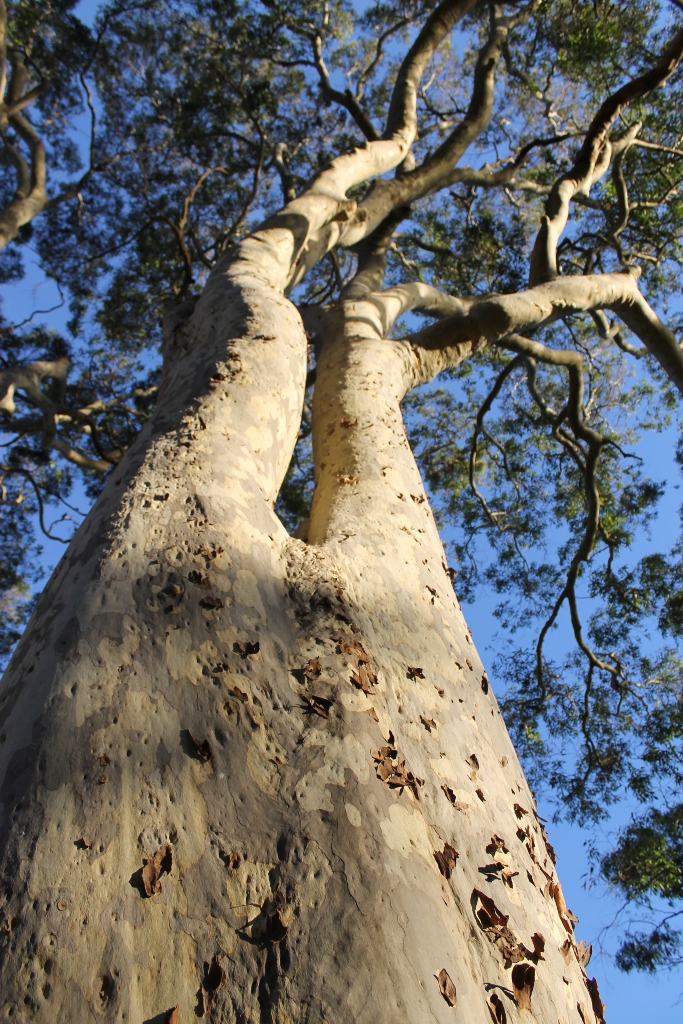

Permaculture Northern Beaches 2018 Events
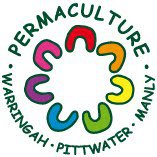 Manly • Warringah • Pittwater | Sydney
Manly • Warringah • Pittwater | Sydney
Permaculture Northern Beaches (PNB) is an active local group based on Sydney's Northern Beaches. Our parent body is Permaculture Sydney North.
PNB hold monthly permaculture related events on the 4th Thursday of each month at 7:15pm at the Nelson Heather Community Centre, Banksia Room, 5 Jacksons Rd, Warriewood
SMALL SPACE GARDENING WORKSHOP
Saturday, May 12, 2018: 10:00am – 1:00pm
BIG IDEAS FOR SMALL SPACESThere are many scenarios where garden space is minimal including rental properties; apartments with balconies; townhouses with small courtyards; retirement homes; caravan parks; community garden allotments and many suburban blocks.
This workshop on small space gardening is to help you make the most of the space you have. You will learn techniques such as stacking, hanging pots, lattices, using narrow niches and wall and fence spaces, portable grow bags, clever plant choices such as dwarf varieties and low maintenance plants that take up minimum space with a high yield.
Design your garden to optimise your space. Join Angela Penn, kitchen garden teacher at Manly West Primary School; and science teacher for this workshop at Manly Vale Community Garden.
Organised by PNB in cooperation with Backyard in a Box. Bookings are essential inquiries: kiri@backyardinabox.com.au
 Manly • Warringah • Pittwater | Sydney
Manly • Warringah • Pittwater | SydneyWorld Environment Day 2018 - Beat Plastic Pollution: If You Can’t Reuse It, Refuse It
“Beat Plastic Pollution”, the theme for World Environment Day 2018, is a call to action for all of us to come together to combat one of the great environmental challenges of our time. Chosen by this year’s host, India, the theme of World Environment Day 2018 invites us all to consider how we can make changes in our everyday lives to reduce the heavy burden of plastic pollution on our natural places, our wildlife – and our own health.
While plastic has many valuable uses, we have become over reliant on single-use or disposable plastic – with severe environmental consequences. Around the world, 1 million plastic drinking bottles are purchased every minute. 500 billion disposable plastic bags are used worldwide every year. In total, 50 per cent of the plastic we use is single use.
Nearly one third of the plastic packaging we use escapes collection systems, which means that it ends up clogging our city streets and polluting our natural environment. Every year, up to 13 million tons of plastic leak into our oceans, where it smothers coral reefs and threatens vulnerable marine wildlife. The plastic that ends up in the oceans can circle the Earth four times in a single year, and it can persist for up to 1,000 years before it fully disintegrates.
Plastic also makes its way into our water supply – and thus into our bodies. What harm does that cause? Scientists still aren’t sure, but plastics contain a number of chemicals, many of which are toxic or disrupt hormones. Plastics can also serve as a magnet for other pollutants, including dioxins, metals and pesticides.
If you can’t reuse it, refuse itThis year’s World Environment Day provides an opportunity for each of us to embrace the many ways that we can help to combat plastic pollution around the world. And you don’t have to wait until 5 June to act.
There are so many things that we can do – from asking the restaurants you frequent to stop using plastic straws, to bringing your own coffee mug to work, to pressuring your local authorities to improve how they manage your city’s waste. Here are some other specific ideas:- Bring your own shopping bags to the supermarket
- Pressure food suppliers to use non-plastic packagin
- Refuse plastic cutlery
- Pick up any plastic you see the next time you go for a walk on the beach
What else can we do to tackle this problem? Share your ideas on social media using the hashtag #BeatPlasticPollution.
- Bring your own shopping bags to the supermarket
- Pressure food suppliers to use non-plastic packagin
- Refuse plastic cutlery
- Pick up any plastic you see the next time you go for a walk on the beach
Newcastle Region - Vital Places For Australian Birds
Published on 1 May 2018 by BIBYTVIn April 2018, BIBY TV visited three great bird places in the Newcastle Region. This video showcases Stockton Sandspit, Newcastle Rock Platform and Hexham Swamp.
Wetland Nightlife Walk
Hosted by Coastal Environment CentreSaturday, May 26 at 5:30 PM - 7:30 PMOur local wetlands are a unique environment supporting a great diversity of native animals. The wetlands are a wonder by night with many of our nocturnal creatures coming out to play.
Come and join us after dark for an exciting evening looking for some of these nocturnal creatures. This spotlighting activity is suitable for children aged five and over.
BOOKINGS ESSENTIAL - ONLINE or Phone: 1300 000 232Bushcare in Pittwater
For further information or to confirm the meeting details for below groups, please contact Council's Bushcare Officer on 9970 1367
BUSHCARE SCHEDULES
Where we work Which day What time
Avalon
Angophora Reserve 3rd Sunday 8:30 - 11:30am
Avalon Dunes 1st Sunday 8:30 - 11:30am
Avalon Golf Course 2nd Wednesday 3 - 5:30pm
Careel Creek 4th Saturday 8:30 - 11:30am
Toongari Reserve 3rd Saturday 9 - 12noon (8 - 11am in summer)
Bangalley Headland 2nd Sunday 9 to 12noon
Bayview
Winnererremy Bay 4th Sunday 9 to 12noon
Bilgola
North Bilgola Beach 3rd Monday 9 - 12noon
Algona Reserve 1st Saturday 9 - 12noon
Plateau Park 1st Friday 8:30 - 11:30am
Church Point
Browns Bay Reserve 1st Tuesday 9 - 12noon
McCarrs Creek Reserve Contact Bushcare Officer To be confirmed
Clareville
Old Wharf Reserve 3rd Saturday 8 - 11am
Elanora
Kundibah Reserve 4th Sunday 8:30 - 11:30am
Mona Vale
Mona Vale Beach Basin 1st Saturday 8 - 11am
Mona Vale Dunes 2nd Saturday+3rd Thursday 8:30 - 11:30am
Newport
Bungan Beach 4th Sunday 9 - 12noon
Crescent Reserve 3rd Sunday 9 - 12noon
North Newport Beach 4th Saturday 8:30 - 11:30am
Porter Reserve 2nd Saturday 8 - 11am
North Narrabeen
Irrawong Reserve 2nd Saturday 2 - 5pm
Palm Beach
North Palm Beach Dunes 3rd Saturday 9 - 12noon
Scotland Island
Catherine Park 2nd Sunday 10 - 12:30pm
Elizabeth Park 1st Saturday 9 - 12noon
Pathilda Reserve 3rd Saturday 9 - 12noon
Warriewood
Warriewood Wetlands 1st Sunday 8:30 - 11:30am
Whale Beach
Norma Park 1st Friday 9 - 12noon
Western Foreshores
Coopers Point, Elvina Bay 2nd Sunday 10 - 1pm
Rocky Point, Elvina Bay 1st Monday 9 - 12noon
Bushcare in Pittwater
Where we work Which day What time
Avalon
Angophora Reserve 3rd Sunday 8:30 - 11:30am
Avalon Dunes 1st Sunday 8:30 - 11:30am
Avalon Golf Course 2nd Wednesday 3 - 5:30pm
Careel Creek 4th Saturday 8:30 - 11:30am
Toongari Reserve 3rd Saturday 9 - 12noon (8 - 11am in summer)
Bangalley Headland 2nd Sunday 9 to 12noon
Bayview
Winnererremy Bay 4th Sunday 9 to 12noon
Bilgola
North Bilgola Beach 3rd Monday 9 - 12noon
Algona Reserve 1st Saturday 9 - 12noon
Plateau Park 1st Friday 8:30 - 11:30am
Church Point
Browns Bay Reserve 1st Tuesday 9 - 12noon
McCarrs Creek Reserve Contact Bushcare Officer To be confirmed
Clareville
Old Wharf Reserve 3rd Saturday 8 - 11am
Elanora
Kundibah Reserve 4th Sunday 8:30 - 11:30am
Mona Vale
Mona Vale Beach Basin 1st Saturday 8 - 11am
Mona Vale Dunes 2nd Saturday+3rd Thursday 8:30 - 11:30am
Newport
Bungan Beach 4th Sunday 9 - 12noon
Crescent Reserve 3rd Sunday 9 - 12noon
North Newport Beach 4th Saturday 8:30 - 11:30am
Porter Reserve 2nd Saturday 8 - 11am
North Narrabeen
Irrawong Reserve 2nd Saturday 2 - 5pm
Palm Beach
North Palm Beach Dunes 3rd Saturday 9 - 12noon
Scotland Island
Catherine Park 2nd Sunday 10 - 12:30pm
Elizabeth Park 1st Saturday 9 - 12noon
Pathilda Reserve 3rd Saturday 9 - 12noon
Warriewood
Warriewood Wetlands 1st Sunday 8:30 - 11:30am
Whale Beach
Norma Park 1st Friday 9 - 12noon
Western Foreshores
Coopers Point, Elvina Bay 2nd Sunday 10 - 1pm
Rocky Point, Elvina Bay 1st Monday 9 - 12noon
Draft Plans Of Management For NSW Reserves, State And National Parks: Have Your Say
The Mother of Ducks Lagoon Nature Reserve Draft Plan of Management is now available for review and comment.Public exhibition of the draft plan provides an important opportunity for members of the community to have a say in the future management of Mother of Ducks Lagoon Nature Reserve.
The draft plan of management is on public exhibition until 18 June 2018 and anyone can review the plan and provide comments.
The Toorale National Park and Toorale State Conservation Area Draft Plan of Management is available for public review and comment. The exhibition of the draft plan provides an important opportunity for members of the community to have a say in future management directions for the parks. Submissions must be received by 7 May 2018.
The Bobbiwaa Parks Draft Plan of Management covers Bobbiwaa State Conservation Area, Couradda National Park, Killarney State Conservation Area and Moema National Parkand is now available for public review and comment. The exhibition of the draft plan provides an important opportunity for members of the community to have a say in future management directions for these parks. Submissions must be received by 21 May 2018.
Woolworths To End Single Use Plastic Bags From June 20th, 2018
Woolworths: We've set the date for the end of single-use plastic bags.
The removal of single-use plastic bags has been a really important topic for our customers and our team. Which is why, Woolworths committed to phase out all single-use plastic bags at our checkouts nationally.
After listening to our customers and working with our teams, we're proud to announce that from the 20th of June 2018 all Woolworths stores will be single-use plastic bag free. We are committed to playing our part in reducing plastic usage and believe that this is the right thing to do for our environment.
This means that we, from the 20th of June, will no longer provide ‘free’ plastic bags at our checkouts in store. We've always encouraged the use of reusable bags and with this change it's now more important than ever for customers to bring in their own bags from home or pick up one of our reusable bags in store.
The Woolworths team continues to work hard to reduce our impact on the environment by supporting the reduction and recycling of plastics throughout our stores. Other initiatives include reducing the amount of plastic packaging on fruits and vegetables; introducing the new Australasian Recycling Label to help educate our customers on what can be recycled and where, as well as the expansion of our soft plastic recycling program.
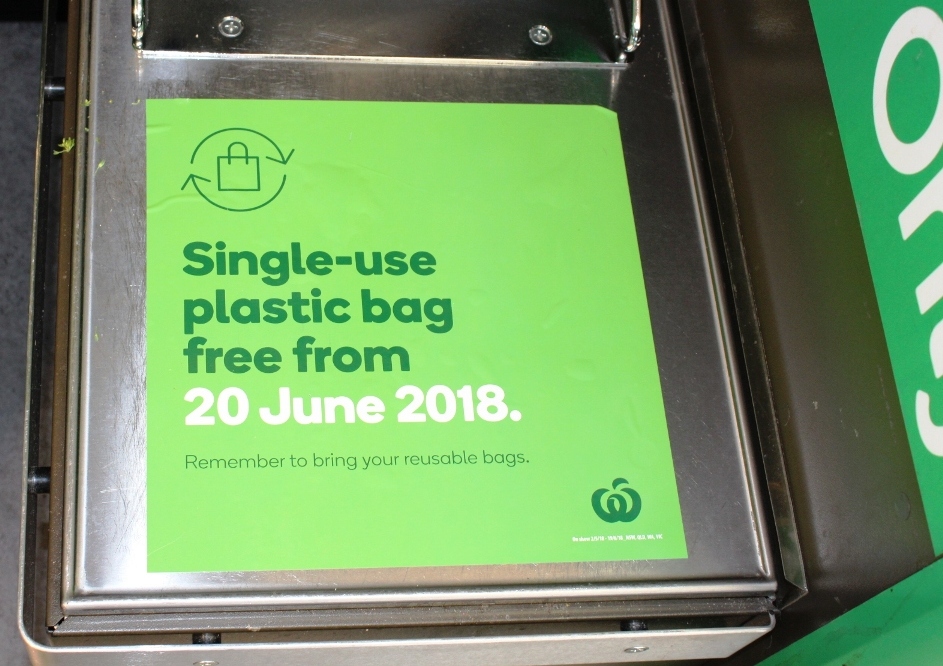
Photo - Notice at Woolworths checkouts, Avalon Beach - A J Guesdon, May 2018

Student's Shrimp Bioplastic A Big Splash In USA
May 4, 2018: CSIROWhen 15-year-old Sydney Girls High School student Angelina Arora started investigating bioplastics almost two years ago, she never imagined her investigations would earn her world-wide attention.
Now, Angelina and her shrimp bioplastic will be representing Australia at the Intel International Science and Engineering Fair (ISEF) in Pittsburgh, Pennsylvania alongside over 1,800 high school students from 75 countries, regions, and territories.
After becoming a finalist in the 2017 BHP Billiton Foundation Science and Engineering Awards for her research into the commercial viability of bioplastics, she decided to refine her research and worked with a CSIRO mentor to develop a completely biodegradable plastic made from prawn shell and sticky protein from the silk of silkworms.
It was this research that won her the Innovator to Market Award in the 2018 BHP Billiton Foundation Science and Engineering Awards, a partnership between the BHP Billiton Foundation, CSIRO and the Australian Science Teachers Association.
Angelina said her project was inspired by being asked to pay for a plastic bag at a shop which prompted her to think of a way people could still have the convenience of plastic, without the harmful environmental effects.
"I'm driven by wanting to help – whether it's people, the environment or animals. It was amazing after months of research that I found a plastic that was suitable," she said.
"I was always a curious child asking why things work and this developed into a love of science. I believe science is the key to all the worlds' mysteries.
"I couldn't imagine a future where it isn't part of my life. I think I'd like to go into medicine as it is all about helping people."
Angelina will be in good company at ISEF with 2018 BHP Billiton Foundation Science and Engineering Awards student finalists Caitlin Roberts, Kavinya Welikala, Ella Cuthbert, Cassandra Dods, Ashley Cain and teacher winner Adele Hudson also representing Australia at the fair.
All of their projects will be on show at the competition.
CSIRO Education and Outreach Director Mary Mulcahy said showcasing Australia's brilliant science, technology, engineering and mathematics projects on the world stage was a key part in enabling Australia to adapt for a rapidly changing future.
"The world is changing faster than many of us can keep up with, but science, technology, engineering and maths (STEM) can guide that future through innovation," Ms Mulcahy said.
"These students are showing on a world stage that Australian students are prepared more than ever for the future."
The Intel International Science and Engineering Fair (Intel ISEF), a program of Society for Science & the Public is the world's largest international pre-college science competition. Each year over 1800 high school students from more than 75 countries, regions, and territories are awarded the opportunity to showcase their independent research and compete for on average $4 million in prizes. The BHP Billiton Foundation and Intel Foundation provide support for the BHP Billiton Foundation Science and Engineering Awards Australian delegation attending the fair.
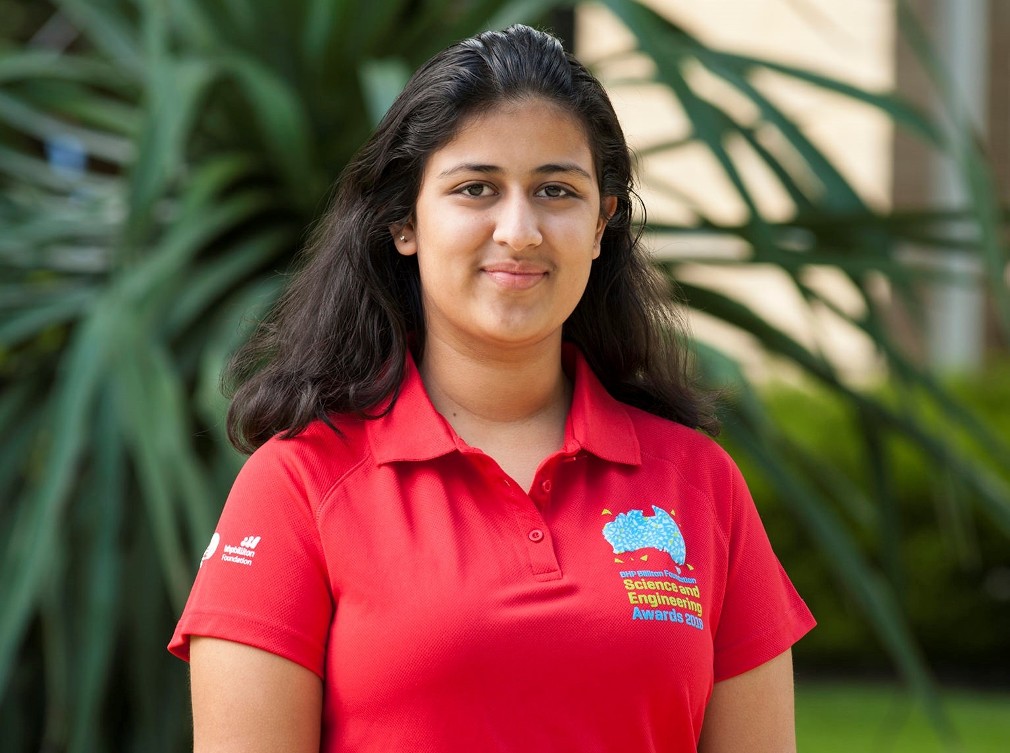
Angelina Arora winner of the Innovator to Market award.

Study Reveals New Antarctic Process Contributing To Sea Level Rise And Climate Change
April 17, 2018: University of TasmaniaA new IMAS-led study has revealed a previously undocumented process where melting glacial ice sheets change the ocean in a way that further accelerates the rate of ice melt and sea level rise.
Led by IMAS PhD student Alessandro Silvano and published in the journal Science Advances, the research found that glacial meltwater makes the ocean's surface layer less salty and more buoyant, preventing deep mixing in winter and allowing warm water at depth to retain its heat and further melt glaciers from below.
"This process is similar to what happens when you put oil and water in a container, with the oil floating on top because it's lighter and less dense," Mr Silvano said.
"The same happens near Antarctica with fresh glacial meltwater, which stays above the warmer and saltier ocean water, insulating the warm water from the cold Antarctic atmosphere and allowing it to cause further glacial melting.
"We found that in this way increased glacial meltwater can cause a positive feedback, driving further melt of ice shelves and hence an increase in sea level rise."
The study found that fresh meltwater also reduces the formation and sinking of dense water in some regions around Antarctica, slowing ocean circulation which takes up and stores heat and carbon dioxide.
"The cold glacial meltwaters flowing from the Antarctic cause a slowing of the currents which enable the ocean to draw down carbon dioxide and heat from the atmosphere.
"In combination, the two processes we identified feed off each other to further accelerate climate change."
Mr Silvano said a similar mechanism has been proposed to explain rapid sea level rise of up to five metres per century at the end of the last glacial period around 15,000 years ago.
"Our study shows that this feedback process is not only possible but is in fact already underway, and may drive further acceleration of the rate of sea level rise in the future.
"Currently the ice shelves resist the flow of ice to the ocean, acting like a buttress to hold the ice sheet on the Antarctic continent.
"Where warm ocean waters flow under the ice shelves they can drive rapid melting from below, causing ice shelves to thin or break up and reducing the buttressing effect.
"This process leads to rising sea levels as more ice flows to the ocean.
"Our results suggest that a further increase in the supply of glacial meltwater to the waters around the Antarctic shelf may trigger a transition from a cold regime to a warm regime, characterised by high rates of melting from the base of ice shelves and reduced formation of cold bottom waters that support ocean uptake of atmospheric heat and carbon dioxide," Mr Silvano said.
Alessandro Silvano, Stephen Rich Rintoul, Beatriz Peña-Molino, William Richard Hobbs, Esmee van Wijk, Shigeru Aoki, Takeshi Tamura, Guy Darvall Williams. Freshening by glacial meltwater enhances melting of ice shelves and reduces formation of Antarctic Bottom Water. Science Advances, 2018; 4 (4): eaap9467 DOI: 10.1126/sciadv.aap9467
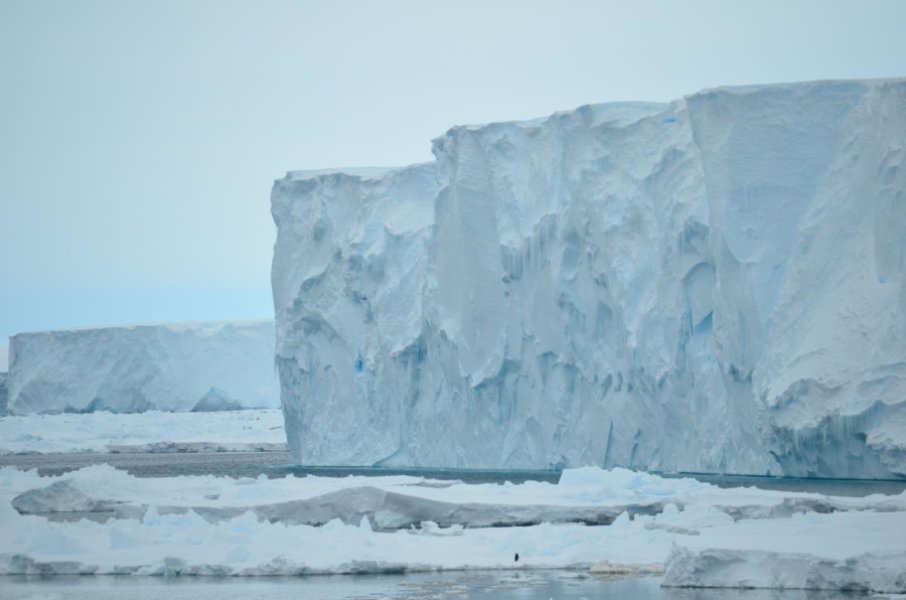
This is the Mertz Glacier in January 2017. Credit: Alessandro Silvano

Indigenous Artwork To Be Enshrined In Print
May 2nd, 2018: GBRMPAA local artist’s stunning acrylic on canvas piece will be showcased on the cover of the Great Barrier Reef Marine Park Authority’s first Reconciliation Action Plan — scheduled for release later this year.
Titled ‘Step of Change’, the work is a creation of Nicky Bidju Pryor, a Juru Traditional Owner from the Burdekin-Bowen area and a descendant of the Birrigubba and Gunggandji nations.
The artwork features traditional depictions of marine life and a symbolic ‘step forward’ set against waves of striking blues and teal.
Great Barrier Reef Marine Park Authority reef protection branch general manager Dr Simon Banks said the artwork was selected from a wide range of high-quality designs submitted during an Expressions of Interest callout earlier this year.
“The piece perfectly captures the meaning and importance of reconciliation and the Great Barrier Reef,” Dr Banks said. “The Reconciliation Action Plan will demonstrate our commitment to strengthening relationships, respect and opportunities for our staff that identify as First Australians, and with Aboriginal and Torres Strait Islander communities.”
Mr Pryor said the Great Barrier Reef played a significant role in his life, having spent part of his childhood enjoying various forms of fishing and educational activities with his family.
“As an adult, I have been on conservation trips with family to learn more about turtles and what is being done to conserve our Traditional Land,” he said.
“I hope my work brings about intercultural understanding for the many people that see it and therefore contributes to reconciliation.”
A ‘Step of Change’ contains multiple symbolic elements including:- A foot – shown as a group of islands. It depicts the step we need to take to make positive changes for the Reef
- Background blues – these colours represent a ripple in the water, indicating the change that will happen if we take a step now
- Animals – representing life in and around the Reef
- Teal lines – represent recovery and the Reef coming to life.
Mr Pryor's artwork will be displayed in a prominent location in the Marine Park Authority’s Townsville office to emphasise the commitment of the organisation to reconciliation.
Reconciliation Action Plans are strategic documents that include practical actions that will drive an organisation’s contribution to reconciliation both internally and in the communities in which it operates.
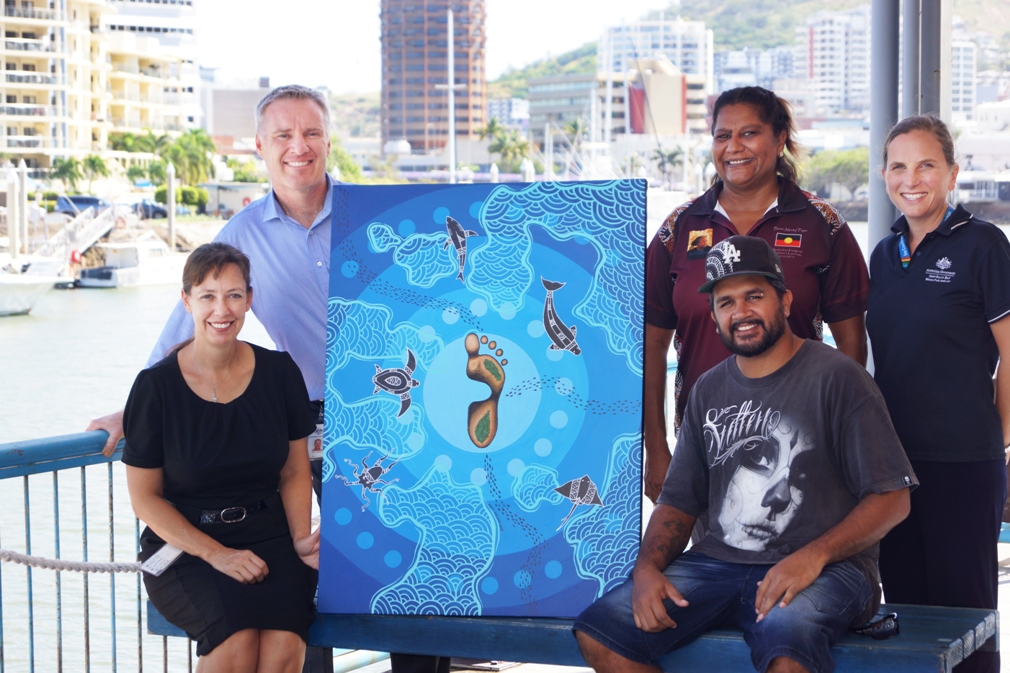
From left: Marine Park Authority Senior Project Manager Rachel Reese and Reef Protection Branch General Manager Dr Simon Banks, artist Nicky Bidju Pryor with his work ‘Step of Change’, Marine Park Authority Indigenous Compliance Manager Peta Rossand Special Projects Manager Eliza Glasson. Image: Great Barrier Reef Marine Park Authority.
- A foot – shown as a group of islands. It depicts the step we need to take to make positive changes for the Reef
- Background blues – these colours represent a ripple in the water, indicating the change that will happen if we take a step now
- Animals – representing life in and around the Reef
- Teal lines – represent recovery and the Reef coming to life.

PITTWATER YHA OFFERS FREE BEDS FOR GREEN HEARTS
Pittwater YHA opens its doors to green-hearted and green-thumbed guests who'll save the gorgeous Ku-ring-gai Chase National Park from imminent asparagus fern invasion. Yes, seriously.
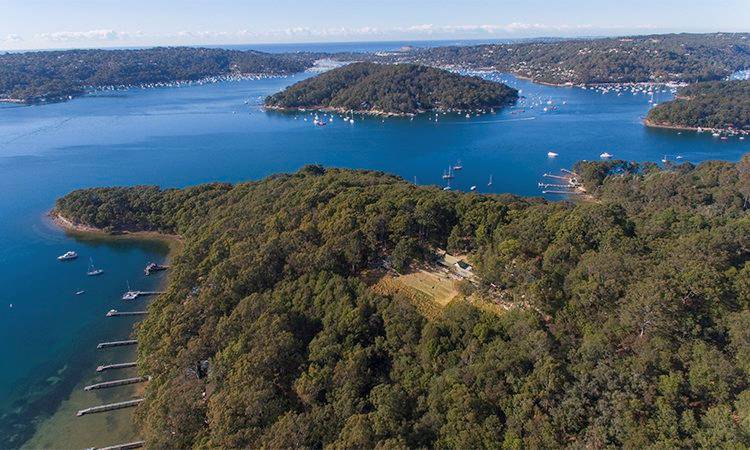
WHAT IS IT?
Bush Regeneration sees eco-conscious, kind hearted humans restore and rehabilitate the gorgeous, sprawling Aussie bush from its weed-infested, degraded state into a healthy, thriving plant community, which will prosper and delight forevermore. Far from just weed removal; Regenerators focus on habitat, drainage, weed sources and establishing native communities. These are big words which probably don’t make much sense – but we have an interactive learning opportunity for you!
WHERE IS IT?
Ku-ring-gai Chase National Park, Sydney’s protected north coast, is home to rock engravings, red ochre rock paintings, the fuzziest wildlife you ever did see and the most breathtaking views a Sydneysider or visitor could comprehend; and is currently under threat from invasive asparagus fern; which needs removing. Who knew your Auntie’s fave veggie could be so aggressive?
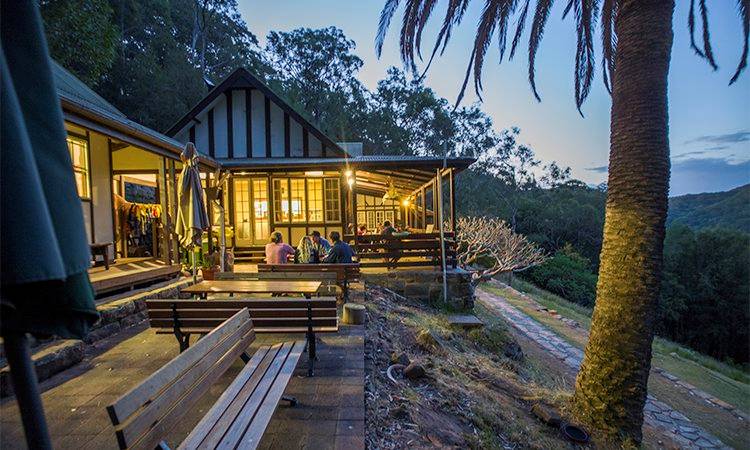
ALRIGHT - SIGN ME UP!
The blissed-out, babbling-brooked, spectacular-viewed, fresh-aired oasis that is our Pittwater YHA, alongside the Northern Beaches Council, are offering you fine green-thumbed and hearted folk the opportunity to volunteer alongside professional Regenerators for a weekend of Pittwater Restoration from May 11 – 13, 2018. Spend two mornings of tending to the gorgeous surrounds and you’ll be rewarded with two nights’ accommodation, two days of meals (morning teas, BBQ lunches and evening dinners) and kayak use throughout your stay. Plus, you’ll be chuffed with yourself for doing your bit for the planet and our futures.
Along with your towels, two sheets, a pillowcase and, sturdy shoes, sunscreen and your breakfasts; you’ll need a $20 contribution for the weekend. For all the T&Cs; head to Pittwater YHA, shoot them an email or give them a ring on (02 9999-5748) – the only thing those guys love more than a regenerated bushland is chatting to ladies and gentleman who are keen on the idea!
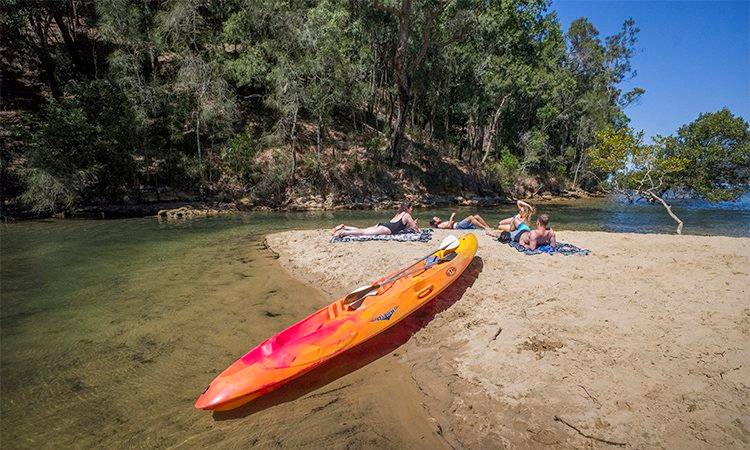
Pittwater YHA opens its doors to green-hearted and green-thumbed guests who'll save the gorgeous Ku-ring-gai Chase National Park from imminent asparagus fern invasion. Yes, seriously.

WHAT IS IT?
Bush Regeneration sees eco-conscious, kind hearted humans restore and rehabilitate the gorgeous, sprawling Aussie bush from its weed-infested, degraded state into a healthy, thriving plant community, which will prosper and delight forevermore. Far from just weed removal; Regenerators focus on habitat, drainage, weed sources and establishing native communities. These are big words which probably don’t make much sense – but we have an interactive learning opportunity for you!
WHERE IS IT?
Ku-ring-gai Chase National Park, Sydney’s protected north coast, is home to rock engravings, red ochre rock paintings, the fuzziest wildlife you ever did see and the most breathtaking views a Sydneysider or visitor could comprehend; and is currently under threat from invasive asparagus fern; which needs removing. Who knew your Auntie’s fave veggie could be so aggressive?

ALRIGHT - SIGN ME UP!
The blissed-out, babbling-brooked, spectacular-viewed, fresh-aired oasis that is our Pittwater YHA, alongside the Northern Beaches Council, are offering you fine green-thumbed and hearted folk the opportunity to volunteer alongside professional Regenerators for a weekend of Pittwater Restoration from May 11 – 13, 2018. Spend two mornings of tending to the gorgeous surrounds and you’ll be rewarded with two nights’ accommodation, two days of meals (morning teas, BBQ lunches and evening dinners) and kayak use throughout your stay. Plus, you’ll be chuffed with yourself for doing your bit for the planet and our futures.
Along with your towels, two sheets, a pillowcase and, sturdy shoes, sunscreen and your breakfasts; you’ll need a $20 contribution for the weekend. For all the T&Cs; head to Pittwater YHA, shoot them an email or give them a ring on (02 9999-5748) – the only thing those guys love more than a regenerated bushland is chatting to ladies and gentleman who are keen on the idea!

Powerful Owl Release
March 18, 2018: Avalon Preservation AssociationPNHA's Jacqui Marlow has advised that a Powerful Owl chick has been released in Plateau Park following its recuperation in Taronga Park.
If you see it there being harassed, or even if you see it at all, can you please phone her on 0458 194 127.
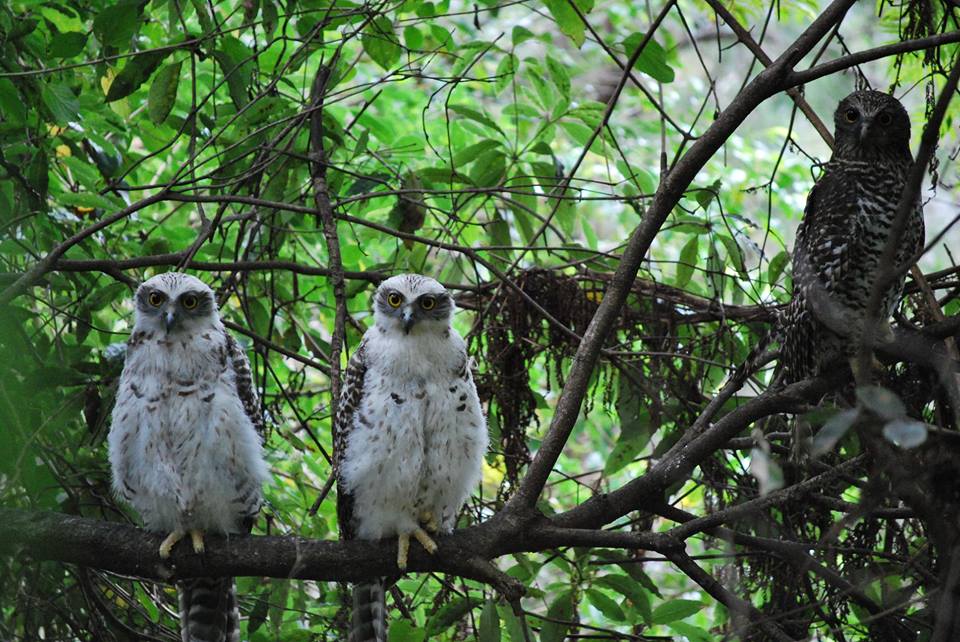
Powerful owl family - photo courtesy PNHA

Australian Paramedics Find Better Drug To Tame Violent Patients
$3.9 Million Investment In Multicultural Mental Health
Medicare Record For Australian Patients
$41 Million Boost To Fight Cancer
Australia’s First Research Hub For Eating Disorders Launched In NSW
Gonski Review To Achieve Educational Excellence In Australian Schools Report Released
- Laying the foundations of learning before the school years and in the home environment
- Equipping every student to grow and succeed with the knowledge they need and a focus on growing each individuals’ skills
- Creating, supporting and valuing a profession of expert educators including building on the Government’s reforms to date in teacher education
- Empowering and supporting school leaders with experience and autonomy
- Lifting aspirations with quality assurance, data and evidence-based research
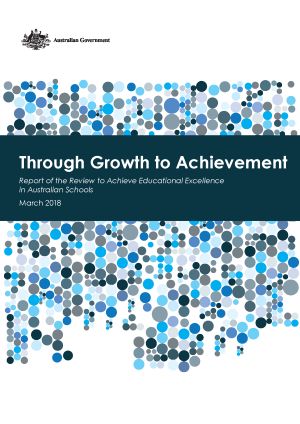
Archibald Prize Finalists 2018: Finalists And Packing Room Prize Announced
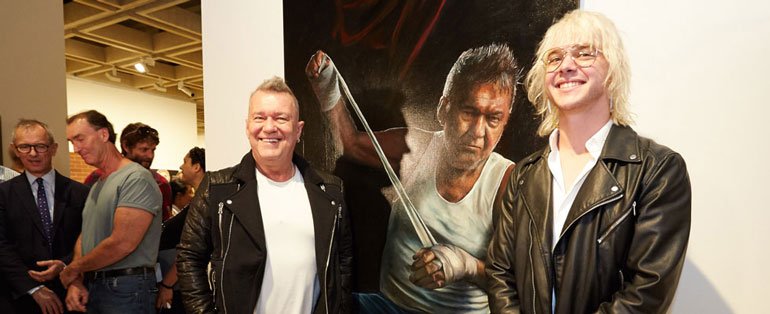
Submarine Design To Move To Australia
Maintenance Work To Pay Tribute To Australian Troops Past And Present
Disclaimer: These articles are not intended to provide medical advice, diagnosis or treatment. Views expressed here do not necessarily reflect those of Pittwater Online News or its staff.